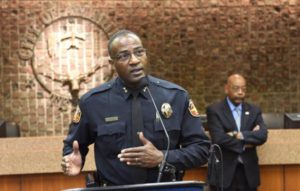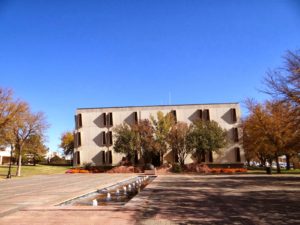Terry Childers didn’t exactly distinguish himself during the year or so he served as Amarillo’s interim city manager.
Childers did, however, make one stellar personnel decision in 2016: hiring Ed Drain — an assistant police chief in Plano — as the interim chief of police when Robert Taylor retired as Amarillo’s top cop. Then he took the next step when he named Drain as the city’s permanent police chief. Not long after that, Childers quit and returned to Oklahoma City.
Drain, meanwhile, has distinguished himself in his few months on the job in Amarillo. Mayor Ginger Nelson brought out some key points regarding Drain’s tenure in her State of the City speech, noting some improvements that I want to look at briefly in this blog post.
One of them involves the return of community policing.
Former Police Chief Jerry Neal introduced to the city the notion of police officers making themselves more visible in the neighborhoods they patrol. He deployed bicycle patrols and instructed officers to engage in greater outreach to the communities they serve.
Then Neal retired. Taylor assumed command. Community policing disappeared. Then Taylor retired. In came Drain. Community policing has made a return.
As Nelson said Tuesday morning, the police department has instituted community policing programs in five neighborhoods. The program includes police substations where officers are able to do paperwork and perform other duties required of them.
The city has transformed the old North Heights YMCA into a community center now called the Charles Warford Center. It will include a police presence and will, according to Nelson, “provide a safe place for neighborhood children.”
It’s interesting to me that all this has occurred during Chief Drain’s time as head of the Amarillo Police Department.
I happen to be a big fan of community policing. It has worked in cities all across the nation. It puts police officers in more direct contact with the neighborhoods they serve. It helps remove the Us vs. The Man stigma that occasionally infects police relationships with the communities they serve.
Crime statistics suggest the city has work to do, according to Nelson, who said Tuesday that she intends to remove Amarillo from the list of “most dangerous cities in Texas.” She intends to make Amarillo known as one of the state’s “safest cities.”
I believe the mayor has a tremendous resource at her disposal in the form of Police Chief Ed Drain.







